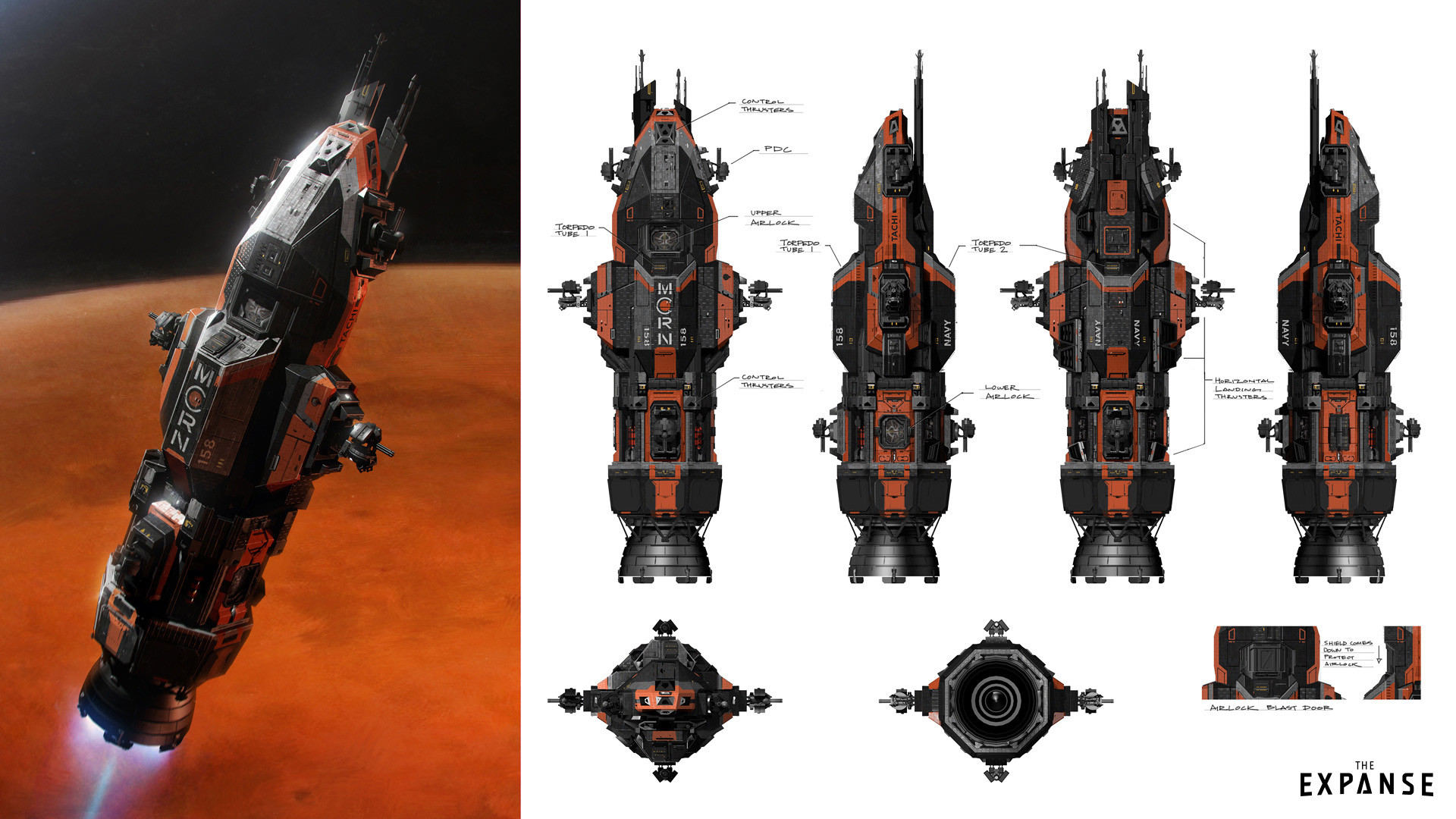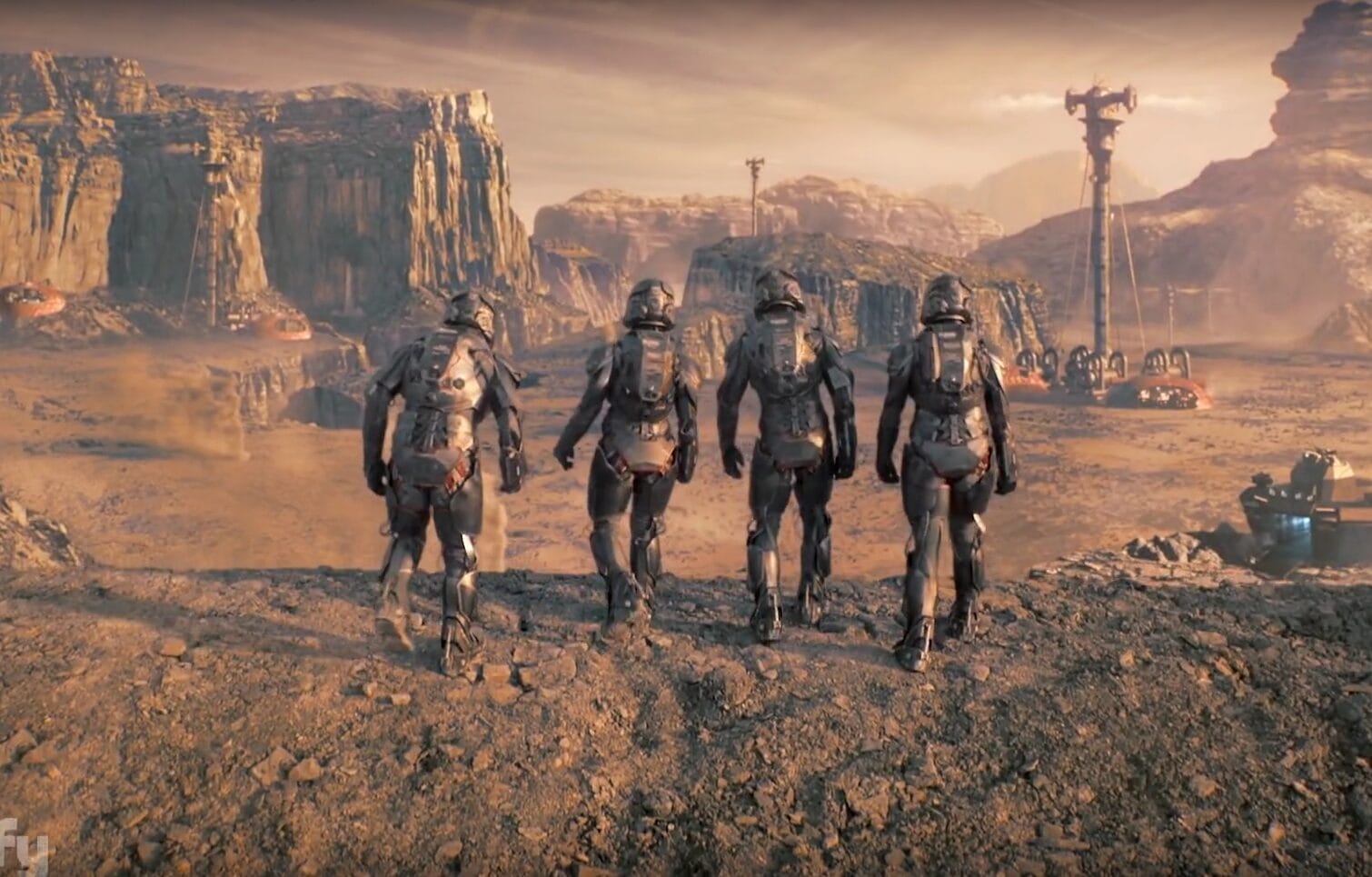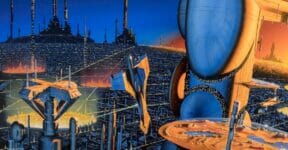After a promising first season that sets the foundation for all the conflicts to follow between Earth, Mars, and the Outer Planets Alliance in the Sol system, The Expanse Season 2 continues the upward trajectory with plenty exciting developments, leading the interplanetary civilization to the brink of a war. Many questions have been answered, but like every good TV series, every revelation leads to more speculations and uncertainties.

If there’s one thing certain in the series, it’s that you’ll be amazed by its depictions of surprisingly creative technologies and tactical decisions to where you’d think they could be true. Here are just a few examples from Season 2.
Epstein Drive
One of the biggest revelations in Season 2 concerns the invention of Epstein Drive. Remember The Expanse has nothing that’s even remotely close to warp speed, light speed, or whatever term you may use to refer to faster-than-light interstellar travel. Unlike in Star Trek and Star Wars where the scriptwriters basically allowed any spaceship to get to wherever it was going as fast as what’s convenient for storytelling, The Expanse doesn’t take such a liberty. But because much of the storyline depends on people being able to zip back and forth between moons, asteroids, and planets, there needs to be something to accommodate the journey.
In Season 2, Episode 6: Paradigm Shift, it’s revealed that space travel and therefore the colonization of the asteroid belt could only happen because Solomon Epstein had invented the “Epstein Drive” about 137 years before the series started. Back then, Mars was already colonized but still under UN control. The Epstein Drive is a modified version of Fusion Reaction Engines, with a highly efficient fuel consumption. Thanks to a long-lasting fuel supply, a spaceship can constantly accelerate as it travels through space.
Solomon initially only wanted to improve fuel efficiency, but he hit the drive button during flight check, and then he suddenly was traveling faster than ever before. He died during that test flight while his ship was still accelerating.
The Epstein Drive on the Rocinante generates 6.3 million Newtons of thrust. As a comparison, the actual real-world Rocketdyne F-1 engine equipped on Saturn V produced 6.7 Newtons of thrust, but it could only burn for 2.5 minutes before running out of fuel. With the Rocinante, the engine can speed up more or less at the same speed as the Saturn V, but indefinitely. It’s a constant acceleration, which is hypothetically the fastest method of space travel. A perpetual 1G of acceleration can get you from Earth to Mars in just 3.5 days, give or take a few hours.
Solomon kept the details of his ideas on his wife’s computer, which she sold to the Martians for good money. Powered by the groundbreaking technology, Mars declared independence from Earth, and together they started the plan to colonize the outer planets. Epstein Drive essentially started a new chapter in Sol system history, filled with conflicts over resources and political power struggles.
Combat in Vacuum
Again, the space battles will not happen in the same way as what you watched on Star Trek and Star Wars. If the series wants to be seriously taken as hard sci-fi, every spaceship combat in vacuum can’t (and shouldn’t) be like dogfights in World War II. It’s a real challenge, but The Expanse does it remarkably well, that it plays a major role in every tactical decision during any combat.
Most battles happen in long range, primarily using guided torpedoes. Once a torpedo is heading your way, it travels so fast that evading is futile, so the best course of defense is to shoot it down with a cannon. In the event the combat becomes medium range, rail guns take over. You cannot shoot down the bullets from a rail gun, but you can probably evade it by making a small maneuver. In close range combat, the only good option is to use defense cannons only. Even if the projectile doesn’t explode on impact, it can still pierce through the spaceship hull with ease.
The faster a ship accelerates, the more easily it can avoid fire. However, the crew can only withstand so much g-force. The Expanse makes space battles easy enough to understand, but you realize how complex it can be.
Goliath Armor
The MCRN (Martian Congressional Republic Navy) has always been a formidable military power in the solar system. They have stockpiled weapons, spaceships, and military equipment, which help establish their dominance. One of the most impressive of them all is the Goliath power armor worn by the Martian Force Recon Marines. In a direct gunfight, the safest place to be is inside the armor because it is resistant to most small arms. The armor even has a built-in mini-gun with armor-piercing explosive rounds.
We think The Expanse has done a great job of establishing the basic concepts of the methods used for interstellar travel, space battles, weapon system, and combat tactics. You feel you’re watching real (or believable) sci-fi rather than mere fantasy. And the revelation about the protomolecule, along with what’s become of Julie Mao, keeps increasing the political tension between Earth, Mars, and the Belt as well. Guaranteed, you’ll see more technologies in the upcoming season as the series takes you to witness the race against time to either destroy or weaponize the substance.
Do you think the combat-in-vacuum physics depicted in the show is better than the typical old-fashioned style? Which technology makes the least sense in The Expanse? We’d love to hear from you.
Other Things You Might Want to Know
Does Venus play any part at all in The Expanse Season 2?
Following the Eros incident, the protomolecule crash-landed on Venus after Miller persuaded the mysterious Julie Mao – who apparently is in control of the substance – to change its trajectory and avoid collision with Earth. The protomolecule is now spreading quickly to cover nearly the entire surface of Venus.
So Julie Mao is still alive after all?
Sort of. She has become some kind of hybrid, formed by a combination of powerful alien substance and human conscience. She’s not exactly alive, but not dead either.
Is The Expanse Season 2 based on Volume 2 of the novel series?
The second season is based on the last 25% of the Leviathan Wakes, which is the first book in the series, and about 65% of the sequel “Caliban’s War.” The season’s episode 6 is actually an adaptation of the short story “Drive,” which is a prequel to Leviathan Wakes.
Check out other articles by month:







